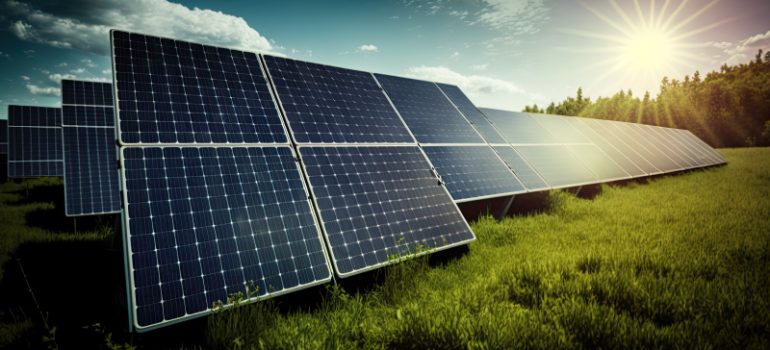
Technology: Solar PV – Electricity
This Blog was posted for you By Your Electrician San Antonio – Good Electric
Technology: Solar PV – Electricity
To produce electricity, solar PV cells use the photovoltaic effect to convert sunlight directly into electricity. The PV cell includes one or two layers of semi-conducting material, usually silicon. Solar PV tiles cover the roof of a house and take advantage of the sunlight; they do not require the direct sun to produce electricity even in cloudy weather. The cell traps this light and creates an electric field, causing electricity to flow. PV offers the ability to generate clean, quiet, and renewable electricity. (If you are interested in a solar installation, please get in touch with us.) Solar panels may be used individually or wired to provide greater power. The available light determines the number and size of panels needed and the amount of energy required. The power generated by solar cells is determined by the weather and time of day. The benefits of solar PV electricity lower carbon emissions: it is renewable once its installation’s carbon payback time is accounted for. More on this website
Carbon savings can be considerable (around 1.2 tonnes of CO2 each year) A 2.5 kWp system could provide 50 percent of a household’s annual electricity needs. A typical home PV system could save around 1200 kg of carbon dioxide annually – around 30 tonnes over its lifetime.
Lower fuel bills: electricity bills could be reduced by as much as $250 per year. A typical home PV system can produce around 50 percent of the electricity per average household in a year.
Sells electricity back to the Grid: if the system is producing more electricity than needed, or at times during the day when the householder is not at home, someone else can use it by either exporting by a private wire or to the GridEnergy storage options: if a home is not connected to the national grid, excess electricity can be stored in batteries. Certificated solar PV is eligible for feed-in tariffs these tackle the high upfront costs of solar PV, so it should break even after several years. They financially reward the generation of renewable electricity and its export as an additional tariff. ( Solar PV Feed Tariffs are payments from the energy companies for every kWh of electricity generated by Solar PV Systems.
Further payments are made for any surplus electricity fed back into the grid. There are also substantial savings on electricity bills by using the electricity at the source. Feed-in Tariff payments are made for 25 years from when a Solar PV system is installed. Here in the southwest, we can expect average annual sunshine totals to rise above 1,500 hours along the coast — higher totals are recorded on the region’s southern coast than on its northern coast, while 1,400 — 1,600 hours of annual sunshine are to be expected in inland areas. This amount of sunshine makes the southwest a good place to gain the most benefit from installing a P.V Solar installation and taking advantage of the feed-in tariff paid on all electricity produced while also helping the environment. For more info on solar, please get in touch with us today.



